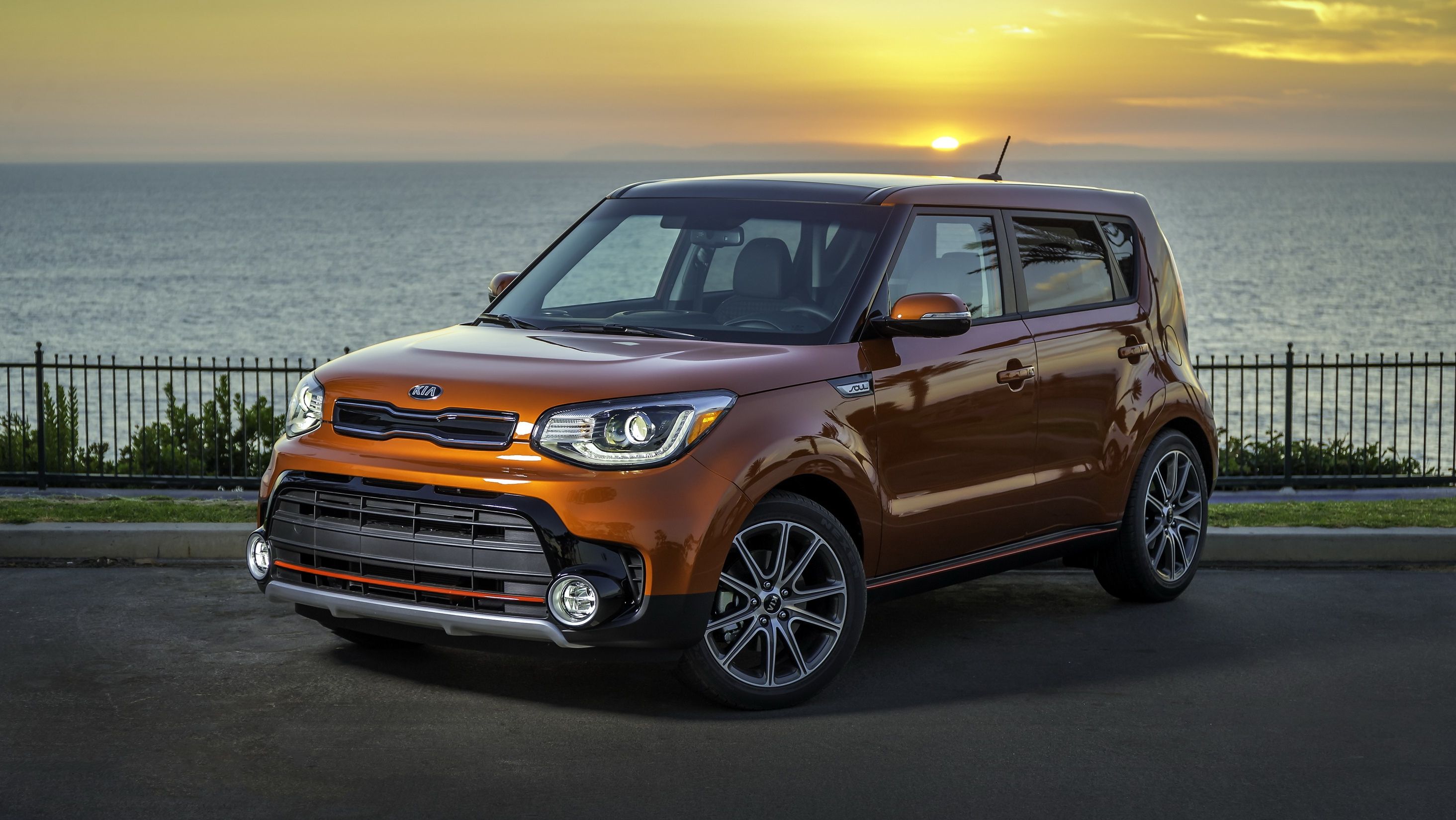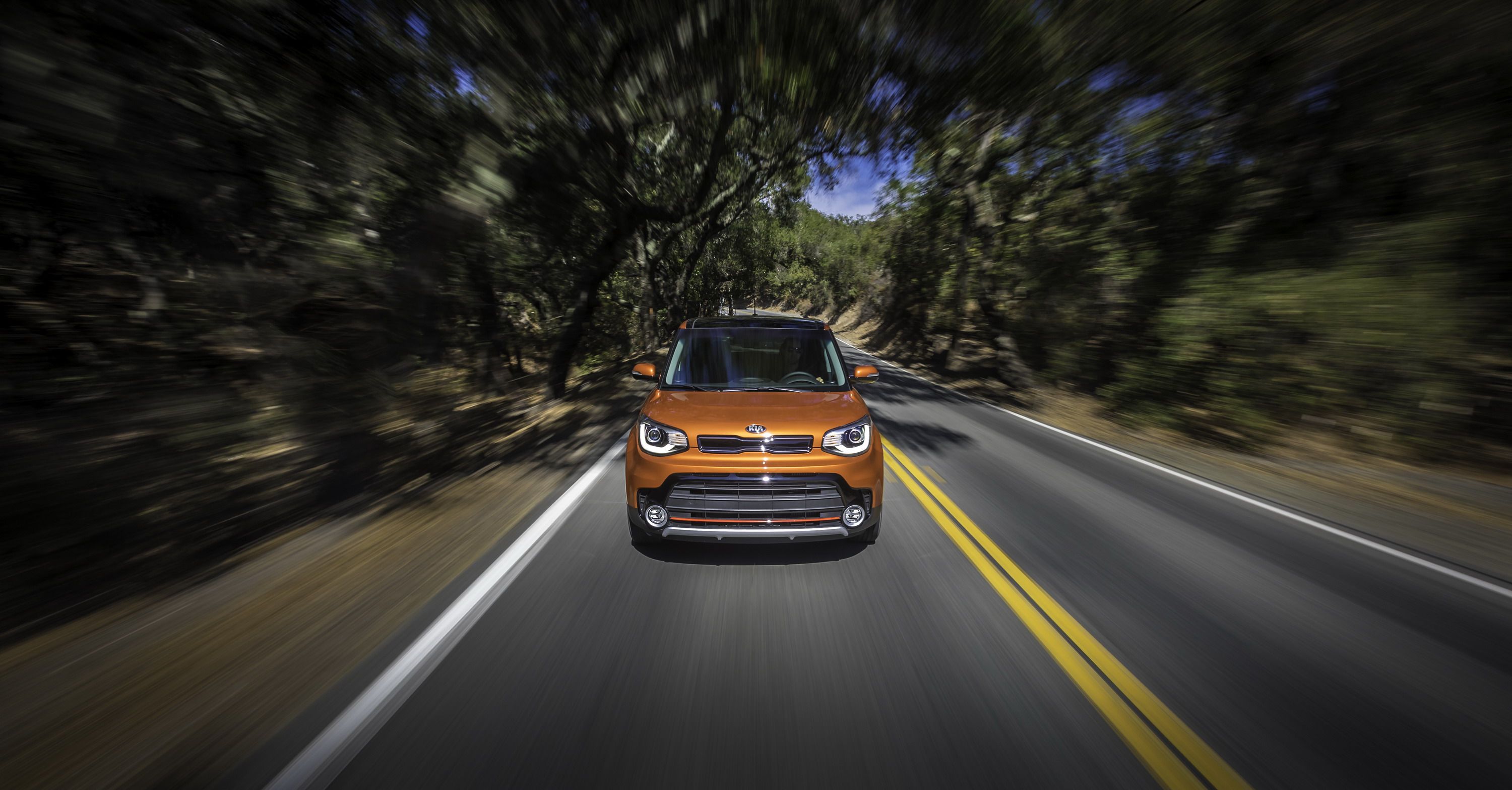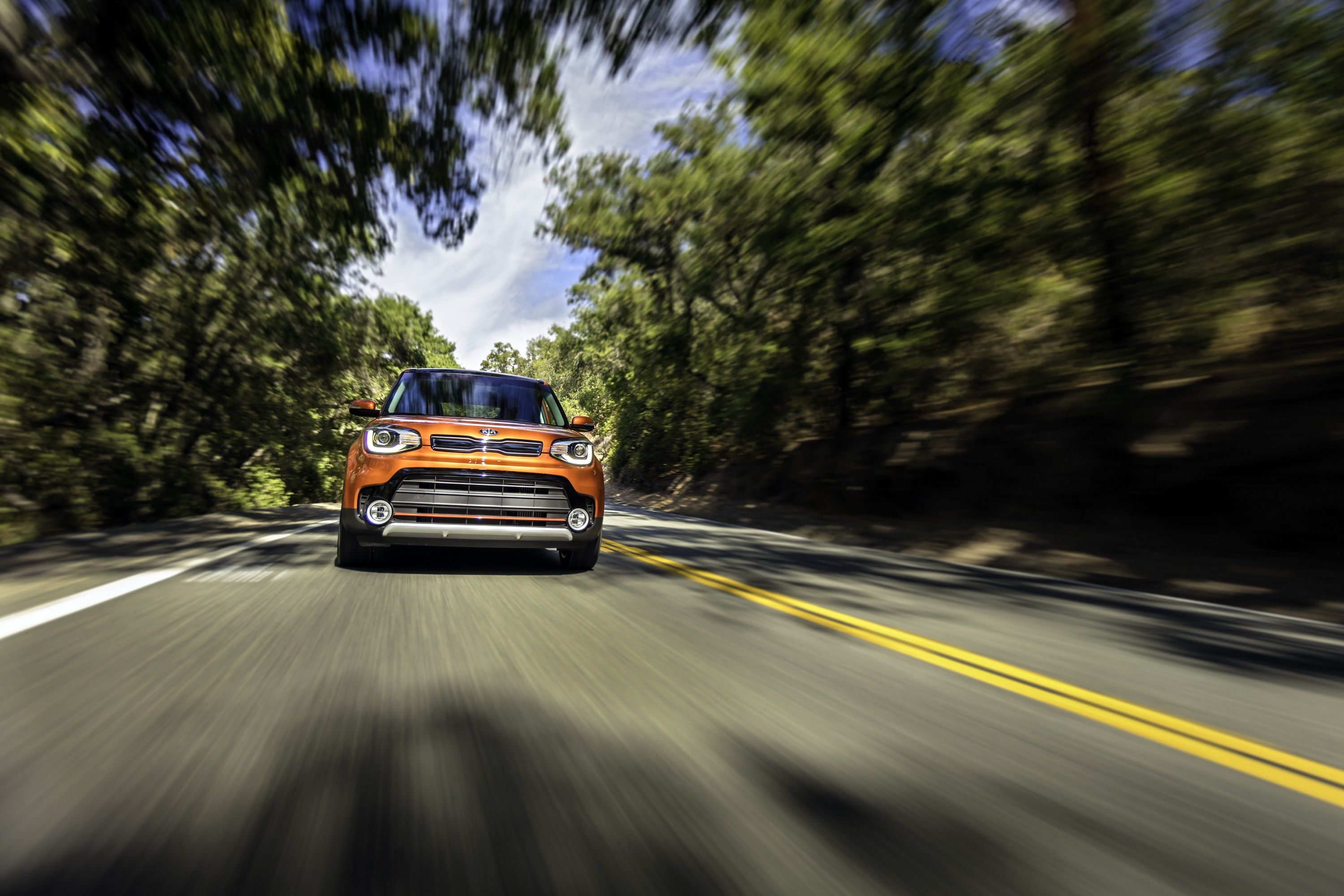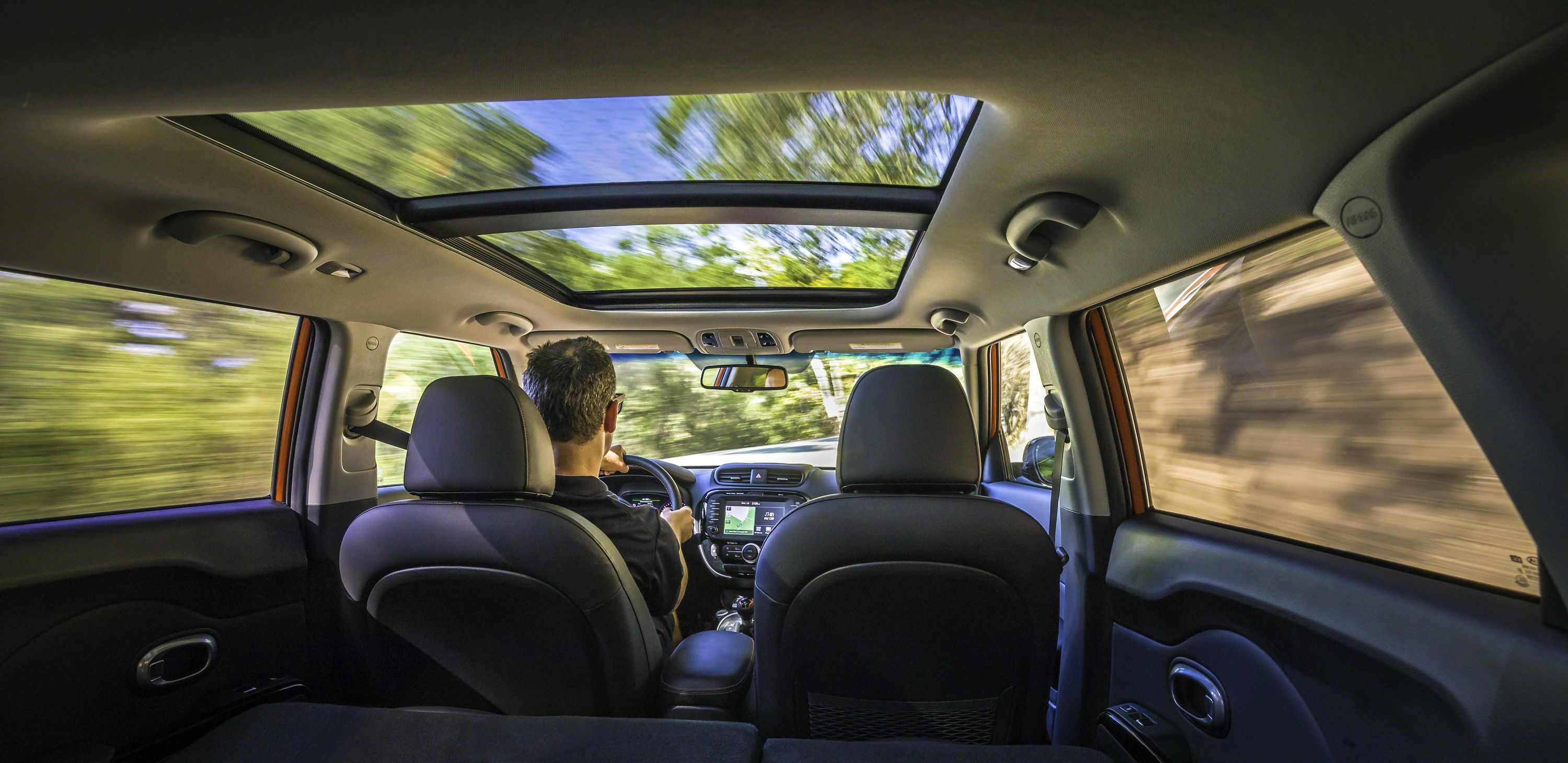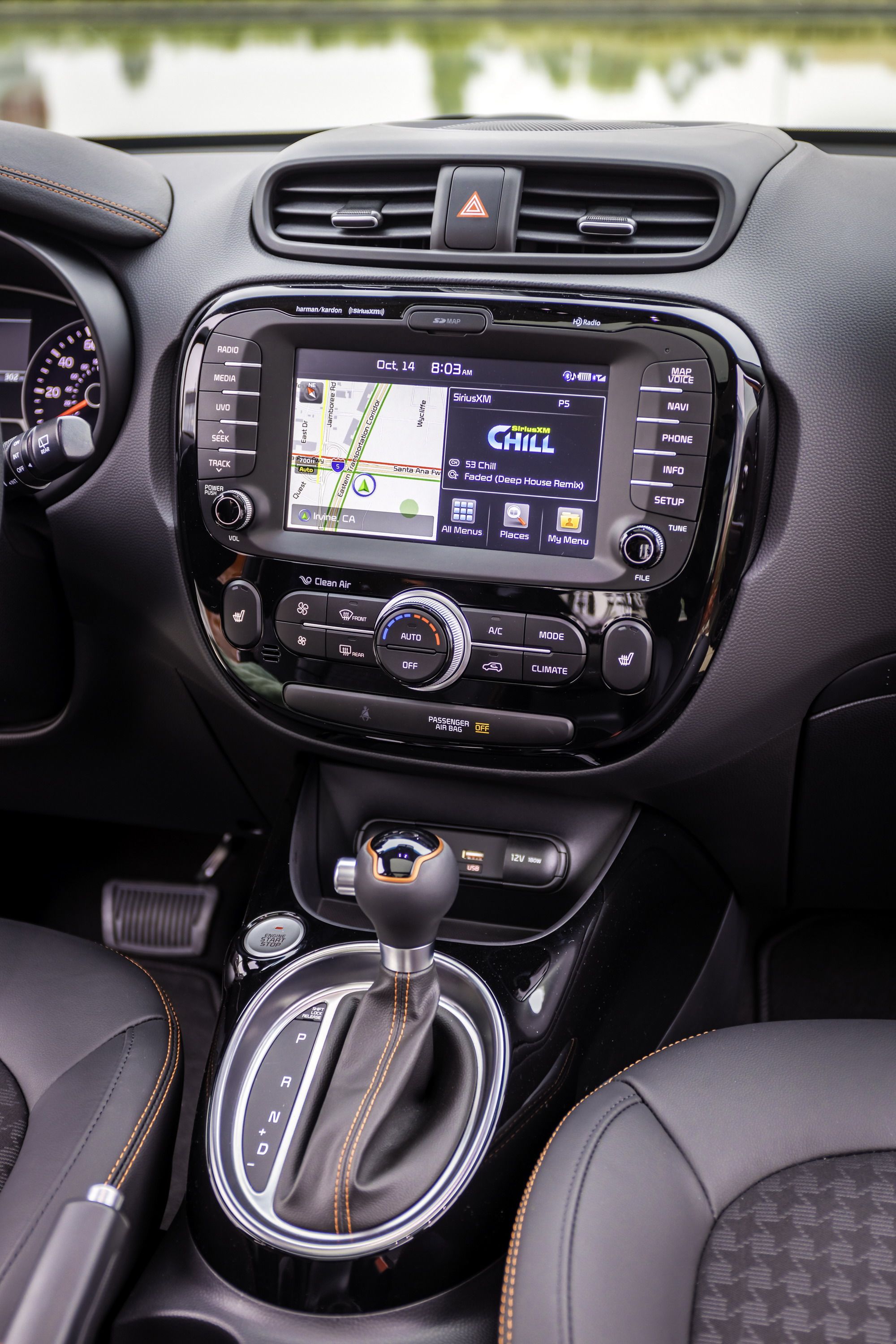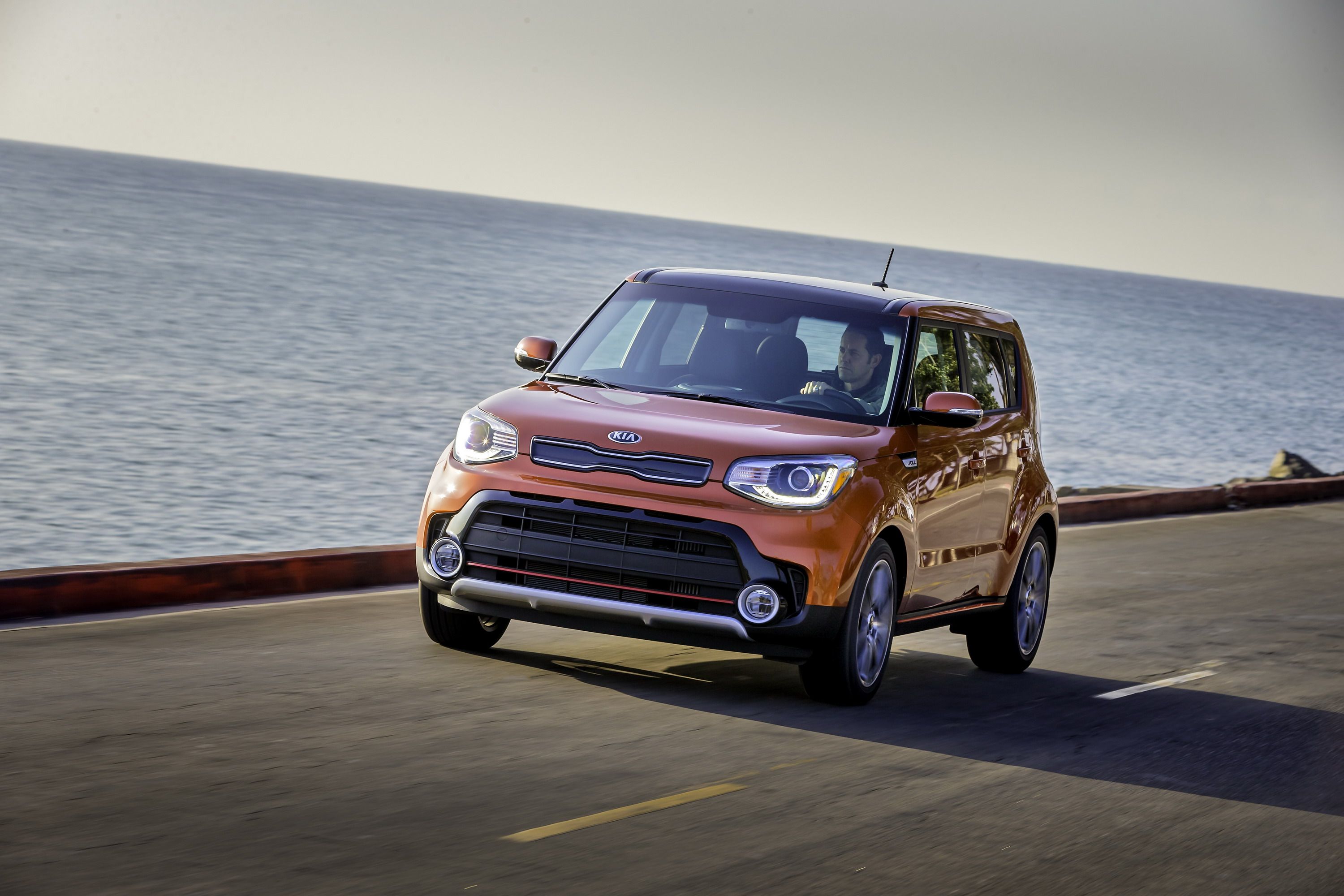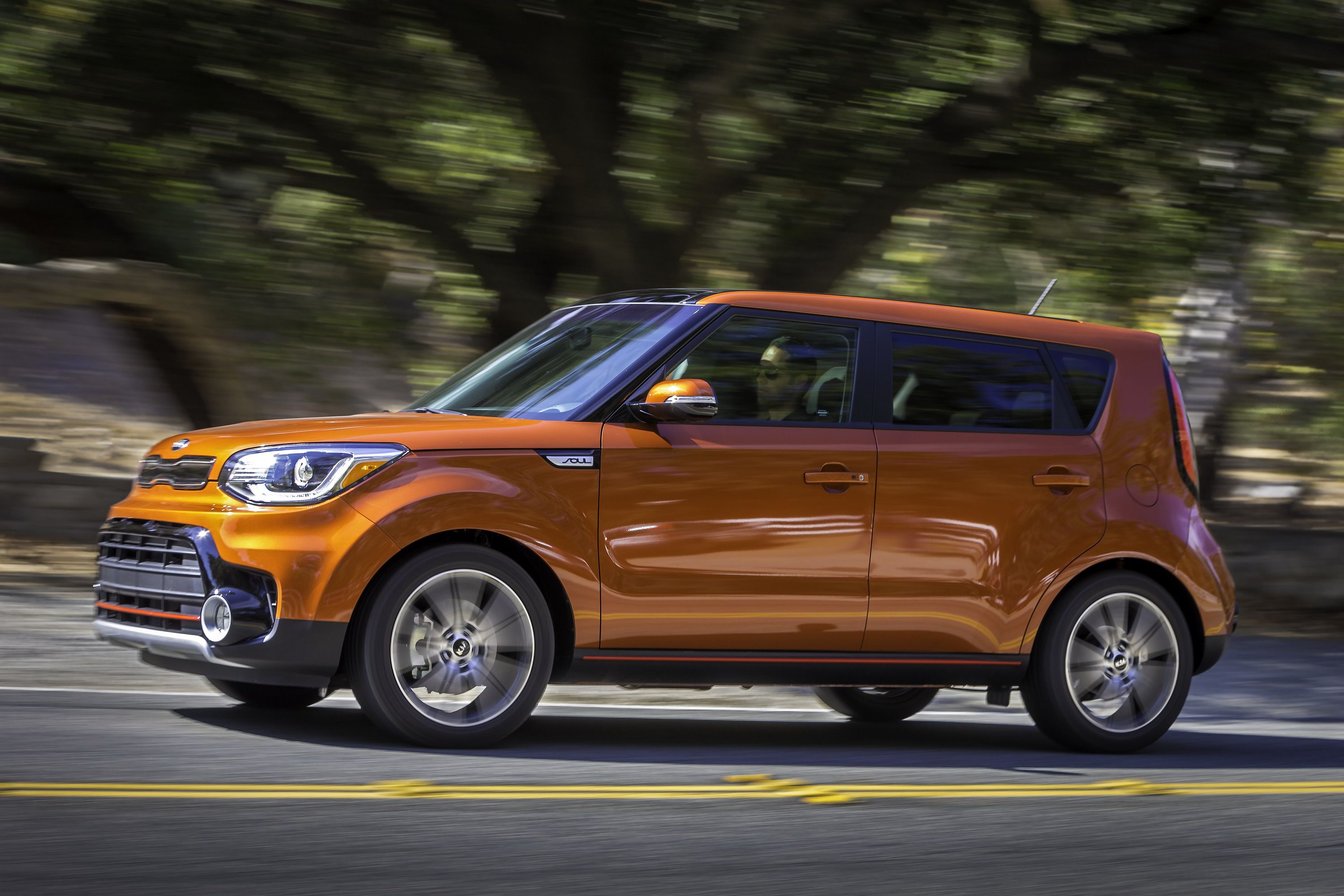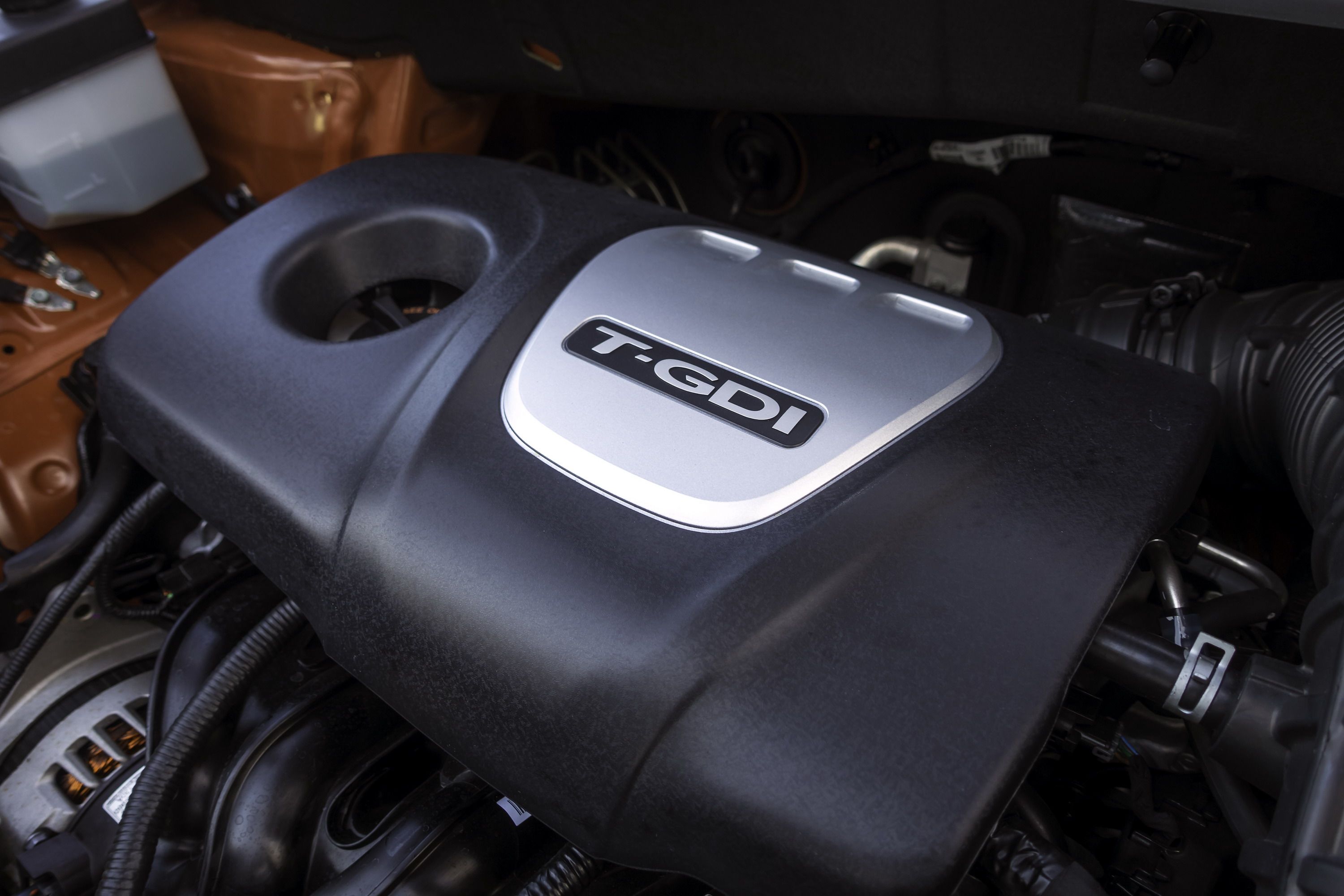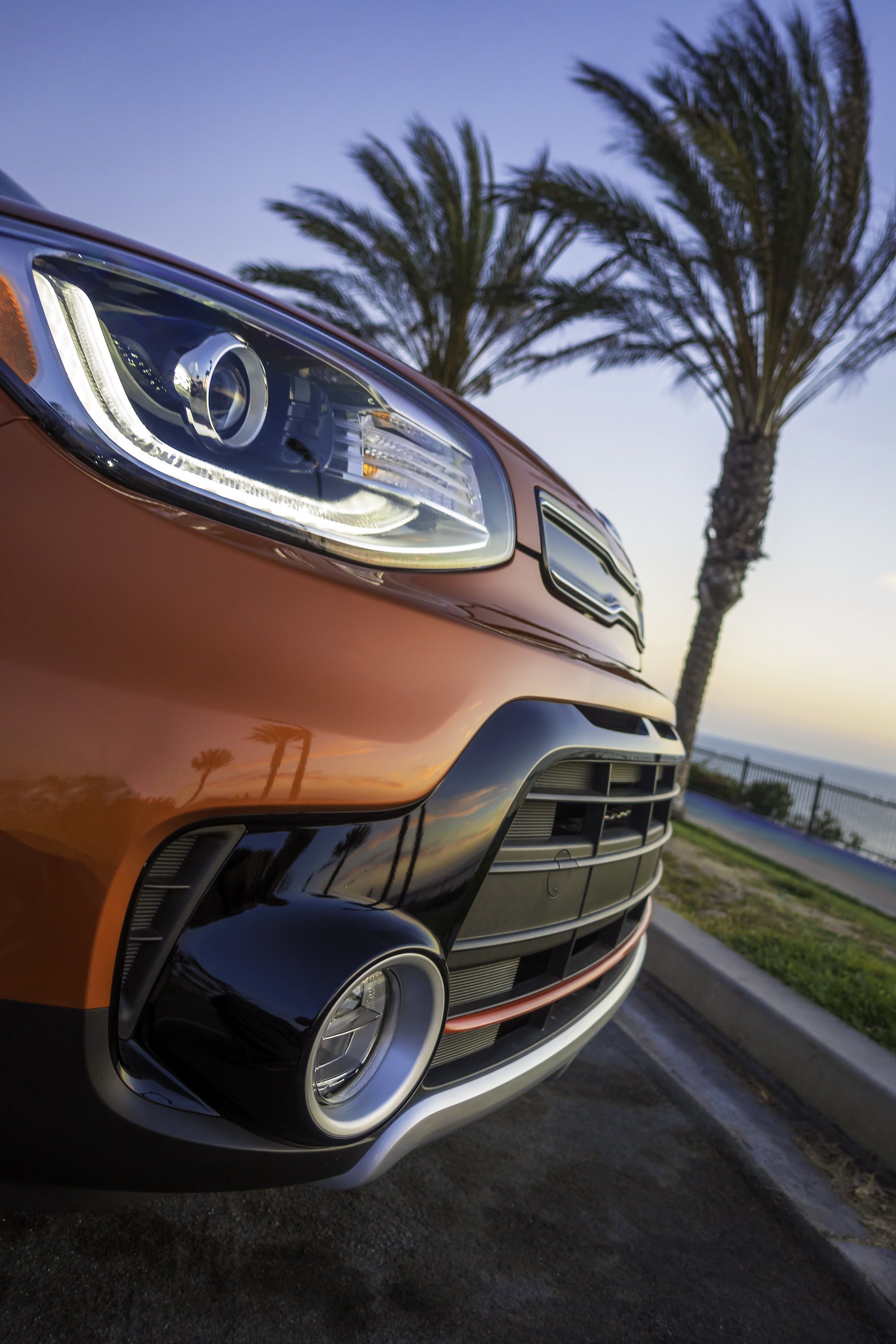The Kia Soul is growing a little bit this year with the addition of a new trim level that is sure to make fans of the unique little crossover very happy. While it’s not quite as exciting as seeing something like the Soul First Class or Ski Gondola being inducted as official production members, it’s really the next best thing. World; I introduce you to the Kia Soul Exclaim – the Soul with that little bit of extra oomph we’ve all been waiting for. Slated to be the range-topping trim level of the Soul range, this model comes well equipped with things like a leather-wrapped steering wheel, push-button start, UVO32 that combines Kia’s e-Services and phone connectivity via Android Auto and Apple CarPlay, and a Harman Kardon 5 premium sound system with eight speakers and an eight-inch touchscreen display. The real news, however, is the 1.6-liter engine lurking under the hood that promises an extra 40 horsepower while maintaining a fuel economy standard of 28 mpg.
Orth Hedrick, the VP of Product Planning at KMA, said, “We wanted to provide loyal Soul lovers and new buyers a sportier option,” said Orth Hedrick, vice president, product planning KMA. “The 2017 Soul Exclaim with its turbocharged engine gives the car’s fans another wonderful choice from an already wonderful line-up.”
Entering is second generation for the 2014 model year, the Kia Soul is still a spring chicken in some regards, but that second generation brought a slew of enhancements that included a new chassis that was much stiffer than before, a one-piece steering system, revised exterior that brought new exterior light units and fascia’s that were simply more attractive than before, and a more upscale interior that features lots of soft-touch surfaces to help give the cabin more of a premium feel. Everyone was happy with the second-gen model except for the fact that it was somewhat underpowered, even in this niche, with just two engine options that brought no more than 164 horsepower at best.
Has Kia finally found the solution to this lack of power by introducing a new range-topping model? Well, we can’t predict the future, but let’s take a closer look and talk more about it.
Continue reading to learn more about the 2017 Kia Soul Turbo.
2017 Kia Soul Turbo
- Make: Array
- Model: 2017 Kia Soul Turbo
- [do not use] Vehicle Model: Array
Exterior
There’s no denying that the second-gen Soul is much sleeker and far more stylish than the first-gen model. Be that as it may, all three trim levels – Base, Plus, and Exclaim – were eerily similar as far as looks good. The only major exterior differences between the different trim levels came in the form of different wheels. The Plus trim level got fog lights, while the existing Exclaim was differentiated by the trim around that large air dam being finished in the same color of the body. All that has changed with the introduction of the new Exclaim turbo. Equipped with a sexy set of exclusive 18-inch wheels, a chrome grille surround, a gloss black air dam surround, clear lens fog lights, and the addition of a little red accenting on the front air dam and side skirts. The insert on the rear fascia is also gloss black to match that of the front, and there are dual chrome exhaust tips – a first for the soul. There are also silver skid plates in the front and rear.

|
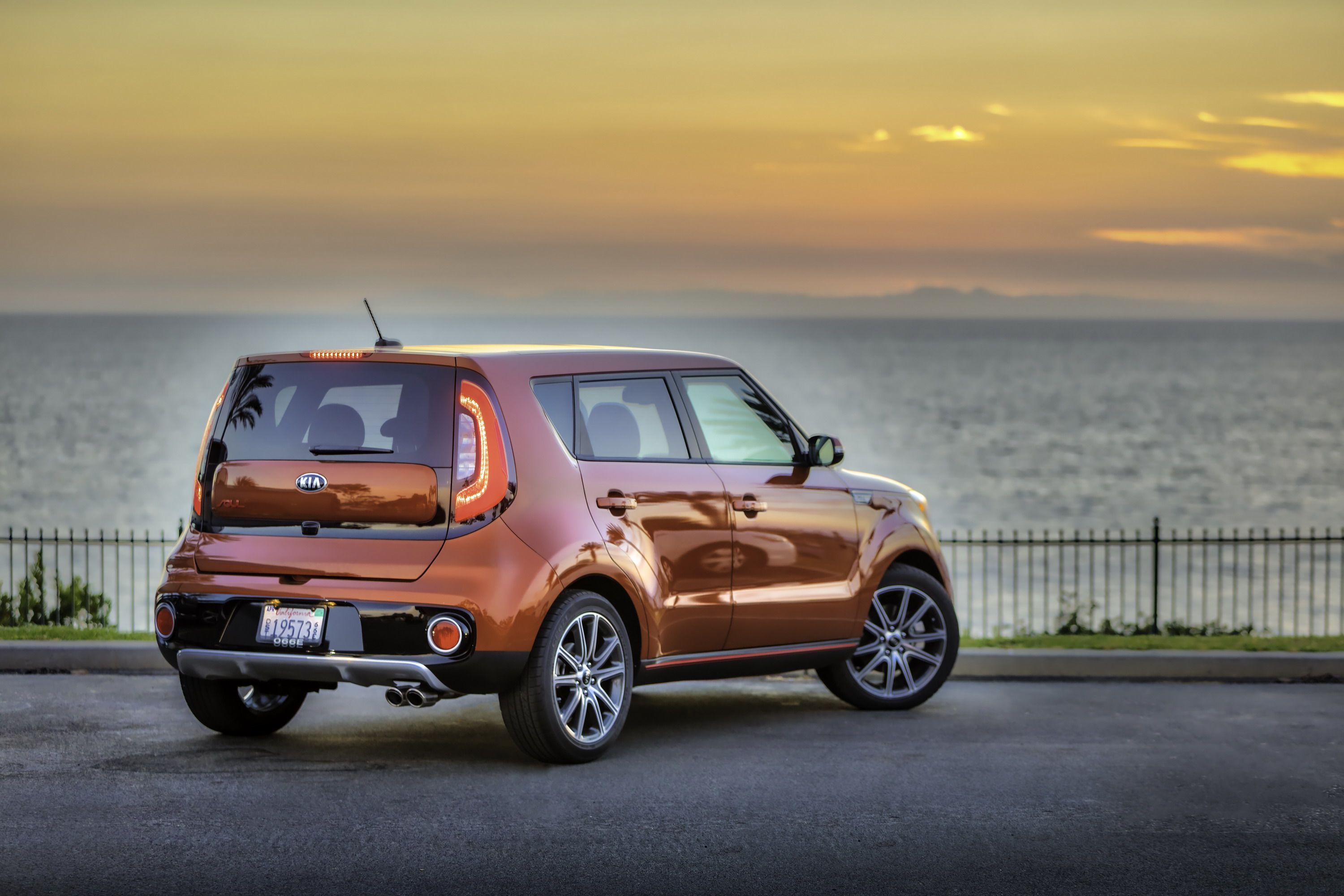
|
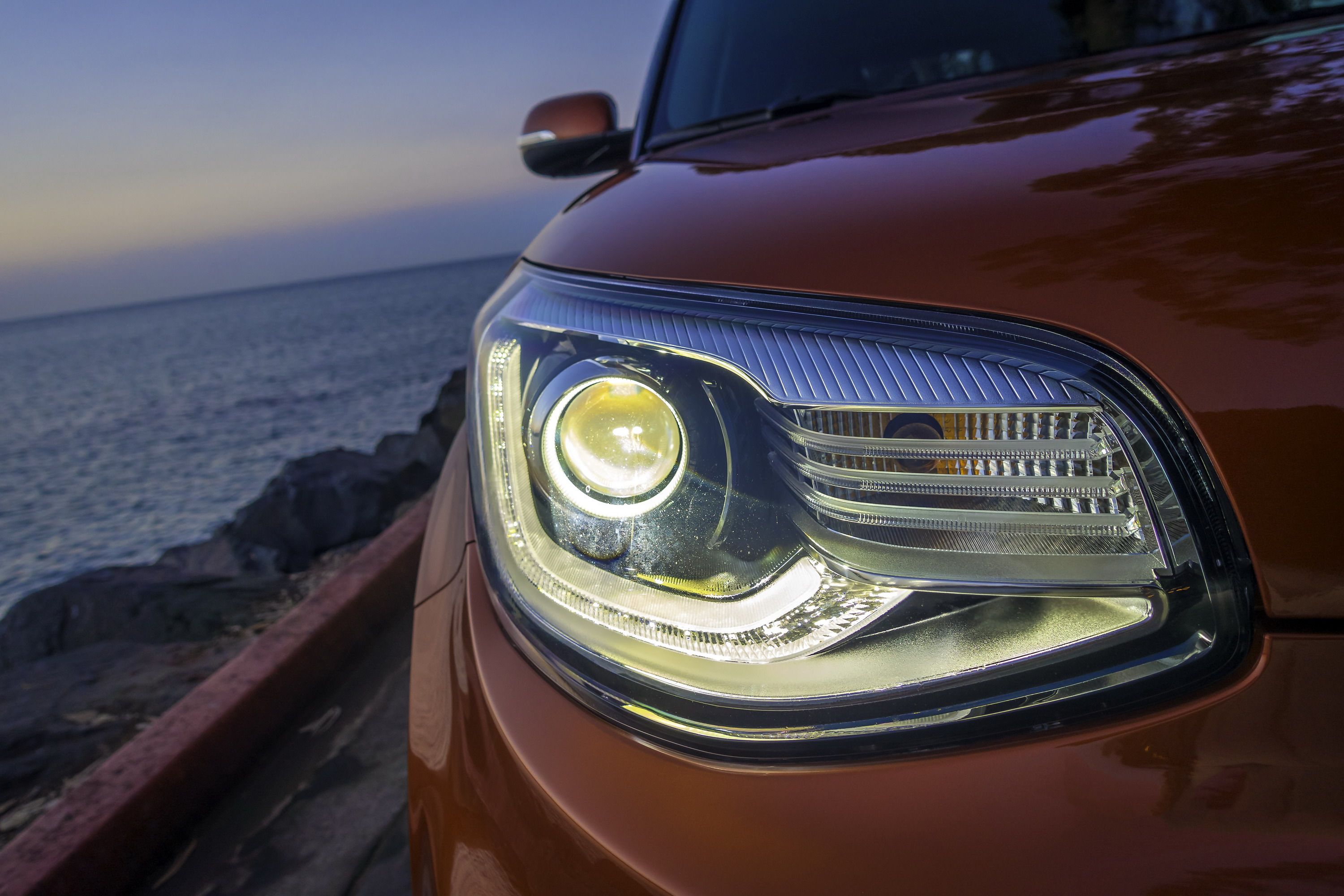
|
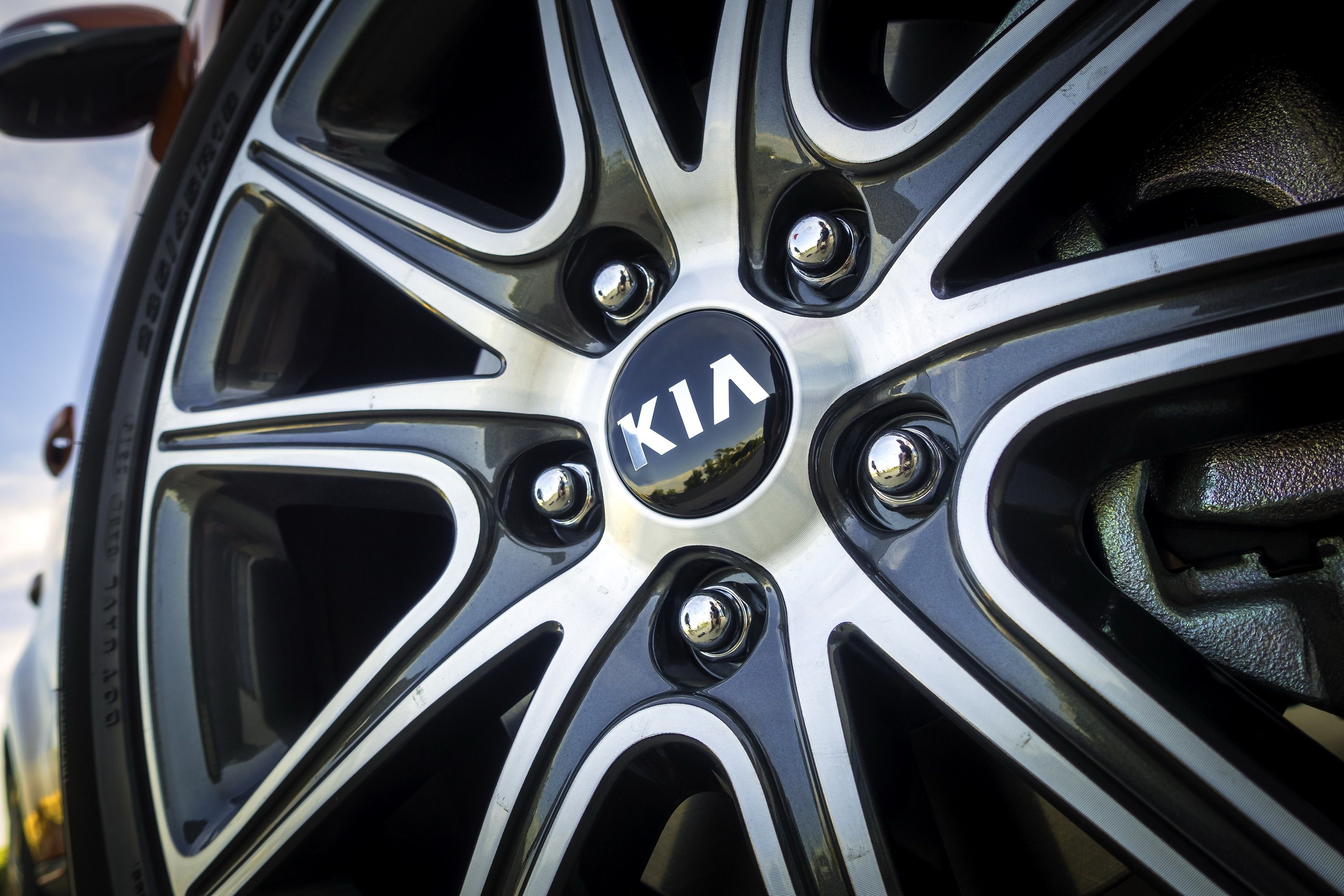
|
The only downside to this new trim level is the new mesh used in the air dam. The addition of the turbocharger under the hood necessitated the addition of an intercooler up front. Therefore, Kia had to change up the mesh of the air dam. It doesn’t look horrible, but it does come off as fairly cheap considering you can see most of that area is blocked off by plastic – something that you don’t see on the non-turbo models.
The Competition
Looking at the images above, you can see how this new exclaim compares to a couple of its primary competitors, the Honda HR-V (left) and the Chevy Trax (right.) The Soul Exclaim Turbo looks fairly sporting with all of that gloss black up front and the chrome grille surround, but the Honda really takes the cake when it comes to precise and aggressive body lines. As far as overall design goes, the Chevy Trax is really the most relevant considering it also sports a large grille/air dam in the middle of the fascia. The Honda has something similar, but it’s much smaller than what you find on the Soul and the Trax. When it comes to choosing a car based on the exterior, it really all depends on what you’re looking for. The Chevy Trax has more of the standard SUV look. The HR-V has more of a crossoverish-coupe look, while the Soul has its unique design that features more of a boxy design with rounded body flaring in all the right places.
Exterior Dimensions
|
Kia Soul Turbo |
Honda HR-V |
Chevrolet Trax |
|
|
Wheelbase |
101.2 Inches |
102.8 Inches |
100.6 Inches |
|
Lenght |
163.0 Inches |
169.1 Inches |
167.2 Inches |
|
Height |
63.0 Inches |
63.2 Inches |
65.2 Inches |
|
Width |
70.9 Inches |
69.8 Inches |
60.6 Inches |
Interior
Inside, the Soul Exclaim Turbo comes to the party with lots of little goodies that makes this the most inviting cabin that we’ve ever seen in a Soul. To start off, there are healthy doses of leather everywhere. The steering wheel, seats, even the pad above the instrument cluster and the gear shifter boot are all constructed from fine leather and held together with orange contrast stitching. You’ll also find a glossy black insert around the gear shifter and on the center stack around the infotainment and HVAC controls – a hint to the same colored inserts used on the exterior to add a little more sport into the Soul’s aesthetic step.
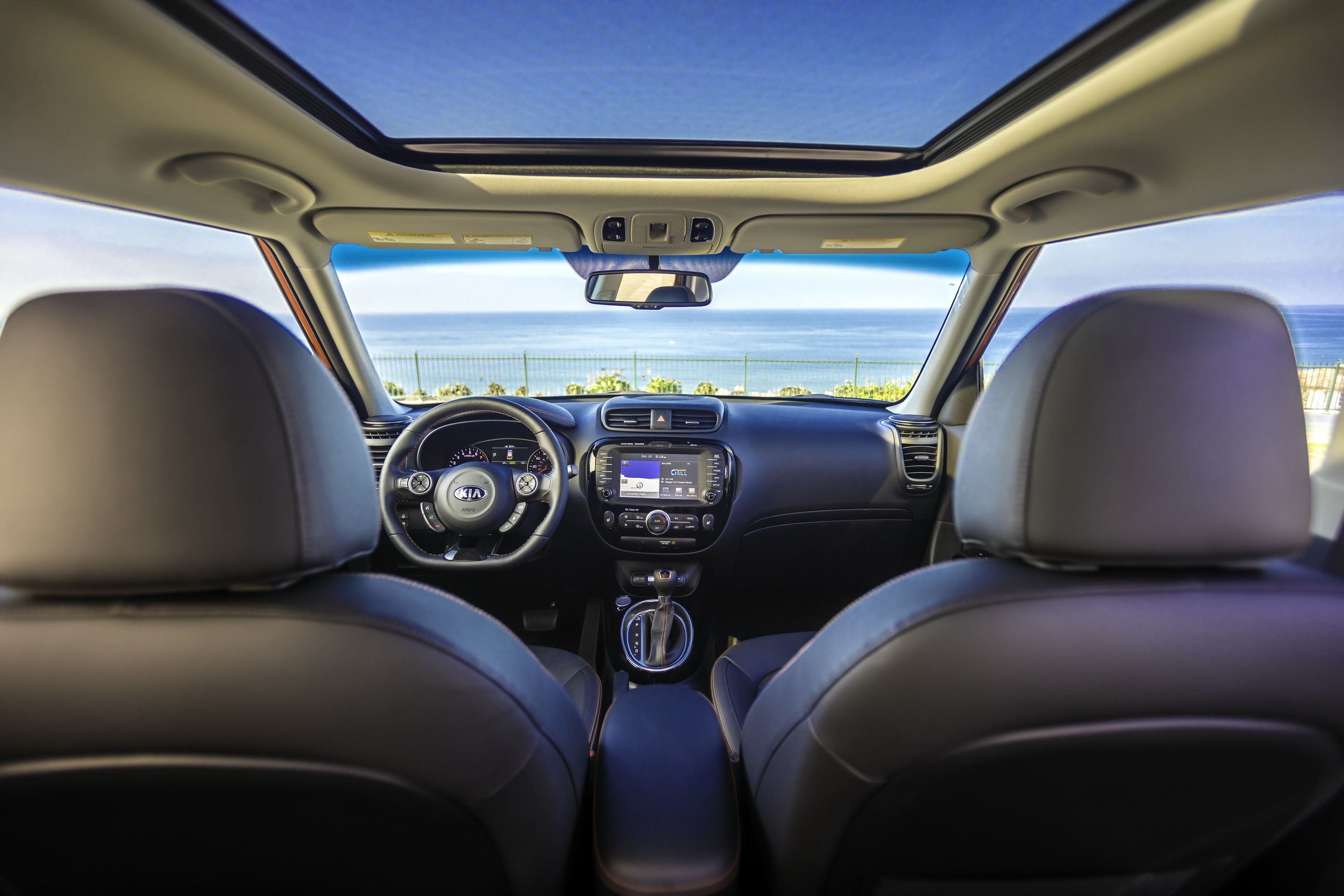
|
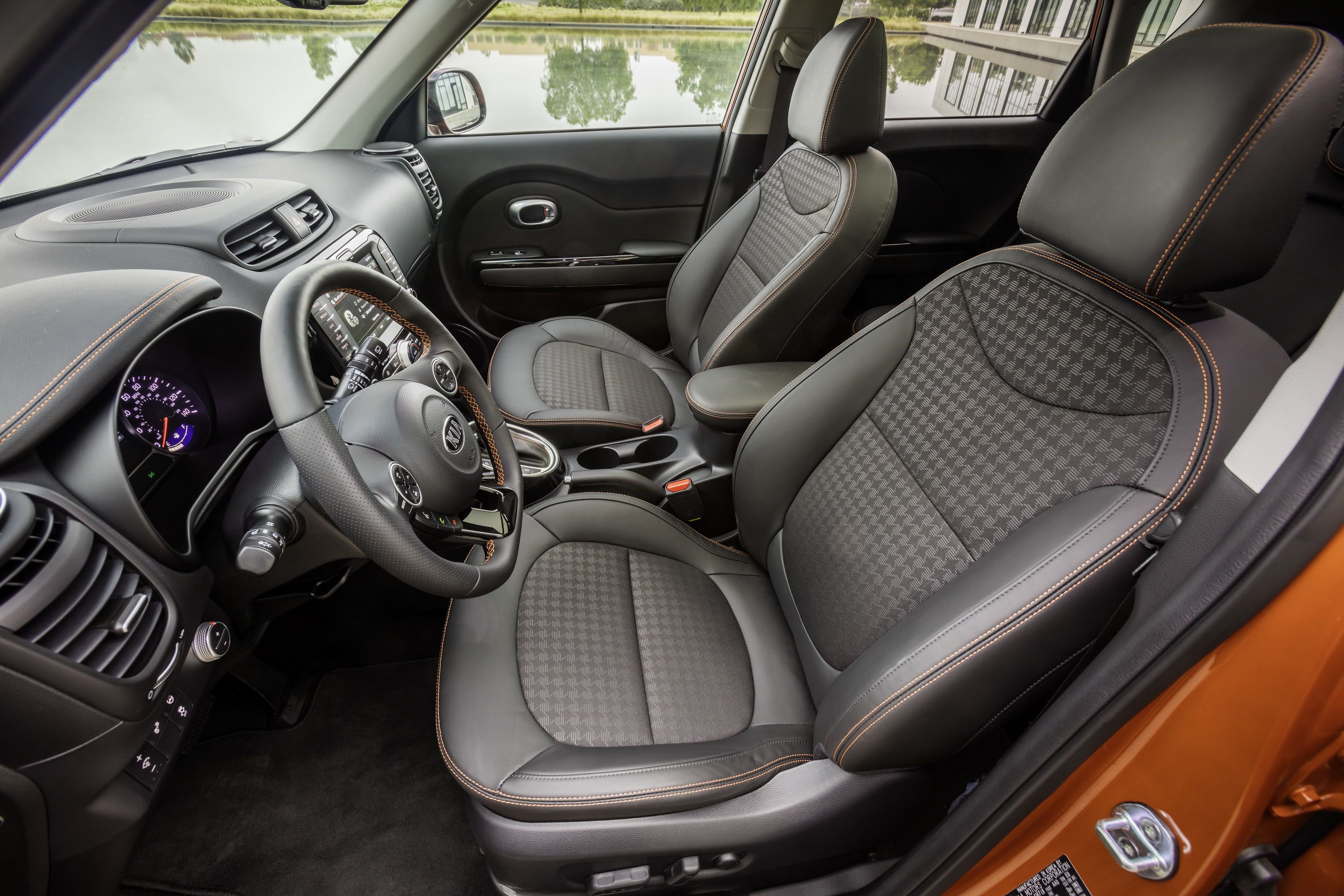
|
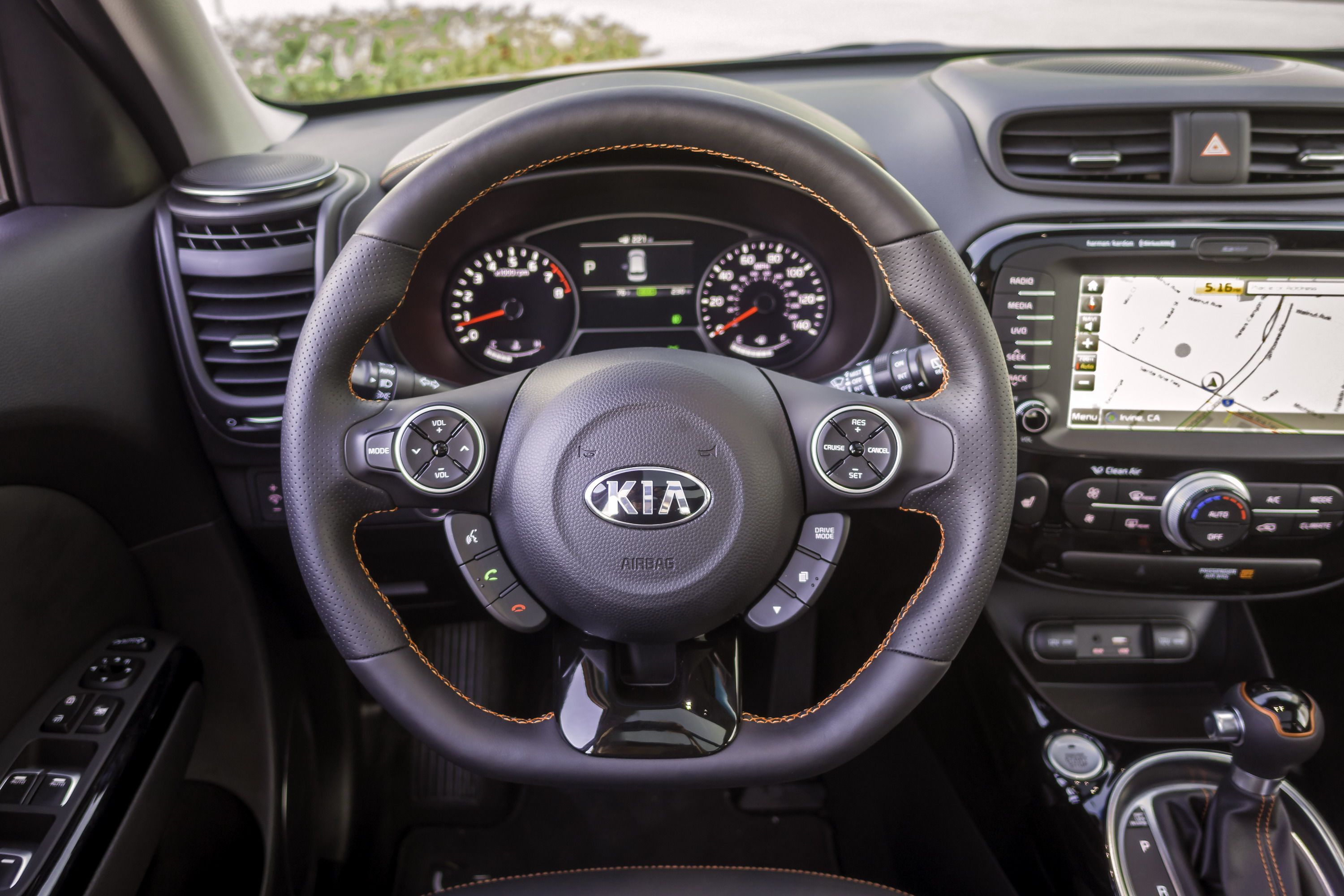
|
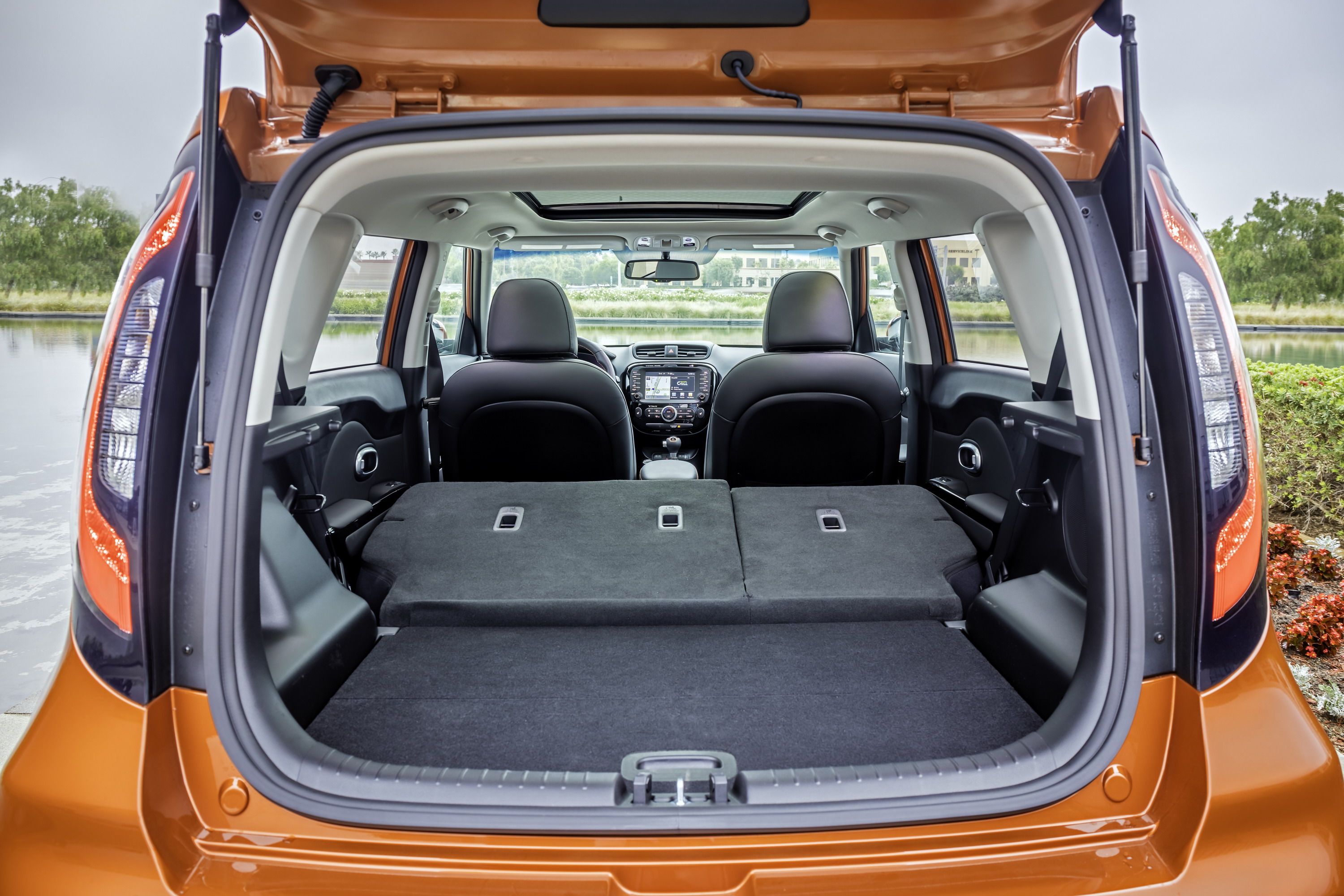
|
On the technology front, there’s that LED backlit instrument cluster that features a small TFT display right in the middle that serves as a driver information center. The center stack gets the option of an eight-inch touchscreen display that is used to control various features like navigation and the 315-Watt, Harman Kardon 5 Premium audio system with eight speakers, including a subwoofer. Android Auto and Apple CarPlay come standard for basic phone connectivity, as does push-button start with smart key technology.
The cabin of the soul is already pretty stylish for a vehicle that’s really on the bottom end of the pricing spectrum. There’s a genuine premium feel when equipped with that large eight-inch touchscreen. Plus you’ve got the unique seat layout with a perforated, checkered layout in the center inserts and the tall headrests. Surely, you’re not going to be taking corners at 90 mph in this thing, but if you tried, the side bolsters on the backrest would certainly help hold you in place. Just to be clear, I wouldn’t recommend that kind of maneuver, though – just be happy the support is there. Also, you’ve got to hand it to Kia for integrated a flat-bottom steering wheel into this model, a feature normally reserved for models like the Audi S5 or the Mercedes-AMG A45, for example.
The Competition
When it comes to comparing the Soul Exclaim Turbo with its primary competition, you’ll find that all three models shown here have similar technology offerings, so it really comes down to what you want aesthetically. The Chevy Trax really competes the best as far as appearances go. The Honda HR-V, on the other hand, has more of a minimalist nature to it with a rather boring dash layout. The Soul is the only option here that includes a small display in the instrument cluster, which also – by some odd chance – has the best backlighting of the three. The Chevy Trax has the most interesting dash layout of the three with a pronounced center stack but also includes an awkwardly small instrument cluster. I’m really not a fan of the HR-V’s dash layout at all, it looks oddly 1990-ish, especially with that weird passenger side HVAC vent. But, the HR-V isn’t without its benefits, as it features touch sensitive controls on the HVAC control center – something that is also generally reserved for more upscale models – and the center console is more elevated, giving the driver a feeling that they are sitting in a cockpit of sorts.
All three models have rear seats that fold down for more cargo room when needed and have fairly similar interior dimensions.
The Competition
|
Kia Soul Turbo |
Honda HR-V |
Chevrolet Trax |
|
|
Head Room - Front |
39.6 Inches |
39.5 Inches |
39.6 Inches |
|
Head Room - Rear |
39.5 Inches |
38.3 Inches |
38.8 Inches |
|
Leg Room - Front |
40.9 Inches |
41.2 Inches |
40.8 Inches |
|
Leg Room - Rear |
39.1 Inches |
39.3 Inches |
35.7 Inches |
|
Shoulder Room - Front |
55.5 Inches |
56.8 Inches |
54.1 Inches |
|
Shoulder Room - Rear |
54.7 Inches |
54.5 Inches |
52.8 Inches |
Drivetrain
The Soul Base is powered by a 1.6-liter that delivers 130 horsepower and 118 pound-feet of torque. While the Soul Plus and Soul Exclaim are motivated by a 2.0-liter that ups the power output to 164 horsepower and 151 pound-feet of torque. Both of these engines were mated as standard with a six-speed manual (props to Kia for offering the option to row your own) or could be optioned with a six-speed automatic. In the case of the Soul Exclaim Turbo, however, this baby gets the 1.6-liter with a nice little turbocharger bolted on that increases output by 40 horsepower. Kia hasn’t exactly been all that specific, though, as we don’t know if that 40 horsepower increase is added onto the 130 produced by the naturally aspirated 1.6-liter it is based on, or the 161 horsepower 2.0-liter. That means total output is really up in the air at this point with two possibilities. The Soul Exclaim either comes with 170 horsepower or 204 horsepower. Torque figures for this model, as well as performance specs, are really unknown, but here at TopSpeed, were hoping that this baby puts out 204 ponies. Unfortunately, since it is the 1.6-liter that was turbocharged, it’s probably a total output of 170 horsepower, which is somewhat of a let down considering that’s only six horsepower more than the 2.0-liter.
More importantly, however, is the introduction of a new seven-speed, dual clutch transmission that should offer quicker and smoother shifting for more lively pickup off the line and a more spirited driving experience. Kia also made it a point to note that this model manages to achieve 28 mpg combined with is a slight improvement over that of both naturally-aspirated variants. It might not be much, but it is fairly notable. It’s hard to judge what kind of acceleration times we’ll see from this turbocharged power plant, considering we don’t know the total horsepower output for sure. Given the turbocharged nature, and assuming there is little turbo lag, I would expect a small improvement over the estimated 10-second sprint to 60 mph of the Plus with the 2.0-liter. It probably won’t be much, but 9.5 to 9.7-seconds wouldn’t necessarily be out of the question depending on total output figures. The DCT will also help in that regard as shifting comes quicker which mean more go and less lag.
The Competition
While the Soul is available with a naturally aspirated 1.6-liter, 2.0-liter, or a turbocharged 1.6-liter, the competition is rather limited as far as options go. The Honda HR-V is only offered with a 1.8-liter i-VTEC that delivers 141 horsepower and 127 pound-feet of torque. Meanwhile, the Chevy Trax gets its momentum from a 1.4-liter that delivers a sluggish 138 horsepower and 148 pound-feet of torque. The Honda can be had with a six-speed manual or a CVT with sport mode (Standard on EX-L Nav trim.) CVT-equipped models can be optioned with all-wheel drive. The Trax comes standard with a six-speed automatic and can be equipped with all-wheel drive if you go with the range-topping Premier. The HR-V garners 25 mpg in the city, 33 mpg on the highway, and 28 mpg combined if you go with the six-speed, while the CVT in two-wheel drive gets 28, 34, and 31, respectively. All-wheel drive drops those figures a bit to 27 mpg in the city, 31 mpg on the highway, and 29 mpg combined. Moving over to the Trax, the two-wheel-drive models achieve 25 mpg in the city and 33 mpg on the highway, while the all-wheel-drive model gets a little less with 24 mpg in the city and 30 mpg on the highway.
|
Honda HR-V |
Chevrolet Trax |
|
|
Engine |
In-Line 4-Cylinder |
1.4L turbocharged engine |
|
Horsepower |
141 HP @ 6,500 RPM |
138 HP @ 4,900 RPM |
|
Torque |
127 LB-FT @ 4,300 RPM |
148 LB-FT @ 1,850 RPM |
|
Transmission |
6-Speed Manual |
6-speed Automatic |
|
Fuel economy City/Highway/Combined |
25 / 33 /28 |
25 / 33 |
Pricing
Kia has remained mute as far as what kind of ticket price we’ll see on the Soul Exclaim Turbo. All of the PR talk that came with its announcement indicates that the naturally aspirated Exclaim is no more, with the Exclaim Turbo taking its place. That could mean the Kia plans to follow the same pricing structure, which would put the Exclaim Turbo at a starting price of $21,300. Then again, with the new turbo, Kia could see fit to increase pricing a little bit to as much as $23,000. That kind of price would still keep this range-topping model at nearly $2,000 cheaper than the range-topping HR-V and some $4,600 cheaper than the range-topping Trax.
|
Soul Base |
1.6L I4 - 6 M/T |
$15,990.00 |
|
Soul Base |
1.6L I4 - 6 A/T |
$17,550.00 |
|
Soul + |
2.0L I4 - 6 A/T |
$19,650.00 |
|
Soul ! |
1.6T I4 - 7 DCT |
$22,650.00 |
Packages
|
Audio Package |
$2,000 |
|
Convenience Package |
$500 |
|
Designer Collection Package |
$400 |
|
Primo Package |
$4,000 |
|
Panoramic Sunroof Package |
$1,000 |
|
Technology Package |
$3,000 |
|
UVO Package |
$1,000 |
As you can see from the chart above, in regard to this review, the Soul really does seem to offer the best value for the money spent. It even has a pretty sporty interior to go with it, but what it really boils down to is the kind of power output you want and how you feel about exterior design. If you want power and don’t mind more of a boxy look, the Soul Exclaim Turbo will probably fit you nicely. If you can’t go with the boxy design – It’s not exactly everyone’s favorite look – the sportiest exterior look with a decent price will come in the form of the HR-V.
If it’s warranty that you’re worried about, the Kia Soul is definitely the best way to go. It comes standard with a basic warranty of 60 months, compared to 36 months for the Chevy and the Honda. The mileage for said warranties caps out at 60,000 for the Soul and just 36,000 for the Honda and Chevy. The soul comes standard with a 120 month or 10-year powertrain warranty while the Chevy and Honda come with just 60 month or five-year powertrain warranties. The powertrain warranty is capped at 100,000 miles for the Soul, while the Trax and HR-V cap out at 60,000 miles. The Soul and HR-V come with a 60-month or five-year anti-corrosion warranty, while the Chevy Trax gets a 72-month warranty. Kia and Chevy cap out their anti-corrosion warranties at 100,000 miles, while the Honda has unlimited mileage as long as you’re within the five-year period warranty period.
|
Kia Soul |
Honda HR-V |
||
|
Basic Warranty (months) |
60 |
36 |
24 |
|
Basic Warranty (miles) |
60,000 |
36,000 |
24,000 |
|
Powertrain Warranty (months) |
120 |
60 |
60 |
|
Powertrain Warranty (miles) |
100,000 |
60,000 |
60,000 |
|
Anti-Corrosion Warranty (months) |
60 |
60 |
36 |
|
Anti-Corrosion Warranty (miles) |
100,000 |
Unlimited |
100,000 |
Competition
Chevy Trax
The Chevy Trax is the baby of the bunch, only being introduced to some markets (Canada, South Korea, Europe, UAE, and Lebanon as early as 2013. It wasn’t until the 2015 model year that the Trax found it’s way into the U.S. market, and even then it was only because the Buick Encore had been performing well (they are based on the same platform, i.e. badge engineered.) After just a few years on the market, the Trax was facelifted for the 2017 model year and comes correct with more style and class than before, making it a prime contender in its segment. Be that as it may, the Trax can be quite pricey in range-topping form or with lots of options checked on lesser models. Starting prices range from $21,000 and climb to as much as $27,600. Interestingly enough, the mid-range LT model starts out at just $22,900, making the jump to the Premier a costly one at $4,700. The Chevy Trax will carry on in its first generation until roughly 2020.
Read more about the Chevy Trax here.
Honda HR-V
Unless you really pay attention to the automotive world, you’ll probably color me crazy when I tell you that the HR-V was around as early as 1999. I know you probably never heard of it prior to 2014, but that’s because it was only sold in Japan and a few other Asian markets between 1999 and 2006. The first model was rather ugly and was actually discontinued until 2014 when Honda finally ushered in the second generation that was based on the third-gen Honda Fit. Far more stylish and appealing, the new HR-V went on sale for 2016, and this time it was also sold in the U.S. as well as other markets around the world. It’s priced to compete hard in its segment with the entry-level model starting out at just $19,365. The mid-range, EX commands $21,415 and the EX-L Navi range-topper starts out at $24,840. Not a bad proposition considering it is similarly equipped and much cheaper in comparison to the Chevy Trax.
Find out more about the Honda HR-V here.
Conclusion
All three of the cars that we’ve discussed here today compete with one another, but the Soul Exclaim Turbo offers the most power, a better warranty, and definitely has a sporty character. Not that the Honda or Chevy are bad vehicles, but the Soul comes cheaper in most cases and really offers the biggest bang for your buck. Of course, that’s assuming you can get past the boxy nature of the Soul, which really is a hit and miss as far as aesthetic opinions go. If value and fuel economy are what you’re looking for, the Soul is probably your best bet of the three. If you’re a minimalist that prefers as few buttons as possible, the HR-V will be your best bet. If you don’t mind paying the extra cheddar, the Trax isn’t a bad vehicle at all, but it’s just not as stylish outside and doesn’t have as much flare inside. It’s also significantly underpowered and is a turd as far as acceleration goes.

